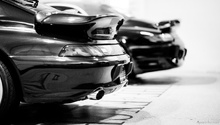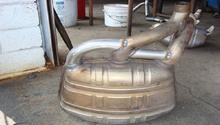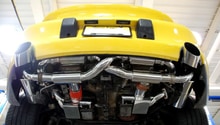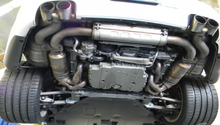Porsche 997: Exhaust Modifications
With its rear engine layout, the 911 has a different exhaust pathway than most conventional cars, since the piping doesn't run underneath the length of the wheelbase. Read on to learn about each component of the exhaust system to figure out how to plan an exhaust upgrade.
This article applies to the Porsche 997 (2005-2012).
The exhaust system on a Porsche 997 can be a little intimidating coming from another make of car. The exhaust piping twists and coils over itself like a nest of snakes, which for someone more familiar with a regular front-engine format may be a bit confusing. However, the truth is that it's not so complicated. There are two banks of cylinders, an exhaust manifold for each, a cross-pipe and mufflers so that flat-six doesn't wake the dead everywhere you go.
Although the parts are the same, just like any other car the layout of the exhaust in the 997 changes depending on the specific model of car you're working on. This guide provides a breakdown of the different exhaust setups across the non-turbo and non-GTx trim levels.
Headers
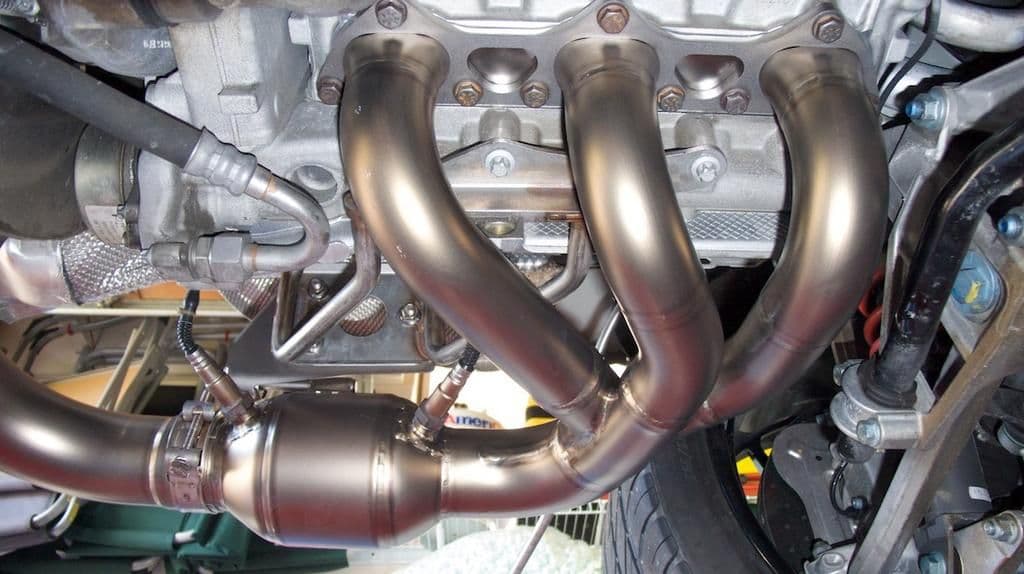
DIY Cost – $250 - $2,600
Professional Cost – $550 - $2,900
Skill Level – Moderate; Difficult for a complete novice, but straightforward for those with experience working on cars.
The header is the piping that leads directly off the engine block. With the flat-6 engine layout, there are two cylinder banks, so there are two headers. On the stock, early model 997s, the piping is pretty small, which leads to a reduction in power. This is especially evident between the base model Carrera and the Carrera S. Larger diameter headers with equal-length runners allow more exhaust to be exported from the engine more quickly, which results in more power. Aftermarket headers are a good upgrade for naturally aspirated Porsches in general. Fabspeed is a brand well known on the forums for producing headers that provide a solid 5 to 10 horsepower—possibly more—depending on the circumstance.
There are low quality headers on eBay for about $250 and less, but they're not recommended. If you're resurrecting a salvaged car as cheaply as possible, go for it, but they may crack or fit poorly. Performance headers from name brands like Fabspeed and OBX cost $1,250 and up.
Crosspipes/Center Muffler
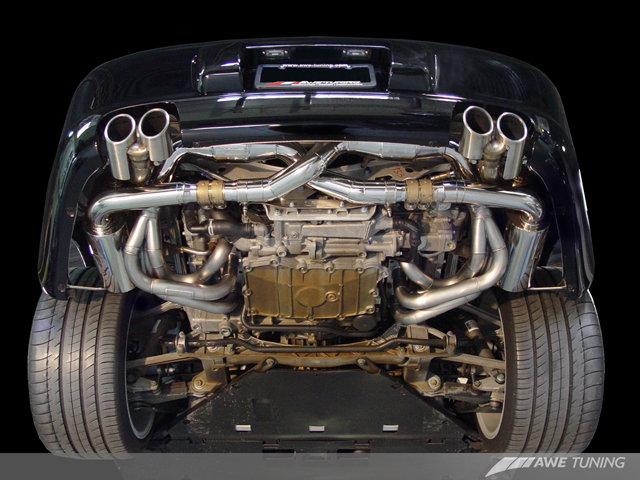
DIY Cost – $800 - $2,400
Professional Cost – $1,200 - $2,800
Skill Level – Moderate; Difficult for a complete novice, but straightforward for those with experience working on cars.
After the exhaust leaves the headers, it enters the catalytic converter and heads out through the rest of the exhaust. On the earlier models of 997, these are the "crossover," named as such because they crossover each other before heading into the side mufflers. Later model 997s are slightly different in that the catalytic converters are connected directly to the headers. Instead of crossing over each other, the exhaust enters a center muffler.
Both generations of naturally-aspirated 997s benefit by keeping the exhaust streams separate. Some aftermarket options for the early 997 will remove the catalytic converters for a marginal increase in horsepower and noise. Exhaust systems for the later generation 997 typically remove the center muffler and replace it with two straight-through crossover pipes, which increase sound and exhaust gas velocity, resulting in more horsepower. Some aftermarket exhaust kits do have a connected "X" which allows some cross flow to occur. The main difference is that the exhaust pulses will create a different sound and possibly a little horsepower.
AWE and Sharkwerks are popular brands with the difference mainly being in sound and increased diameter over the stock units. The Fabspeed X-pipe connects the exhaust flows from each bank to even out the exhaust pulses and provide a smoother sound.
Mufflers
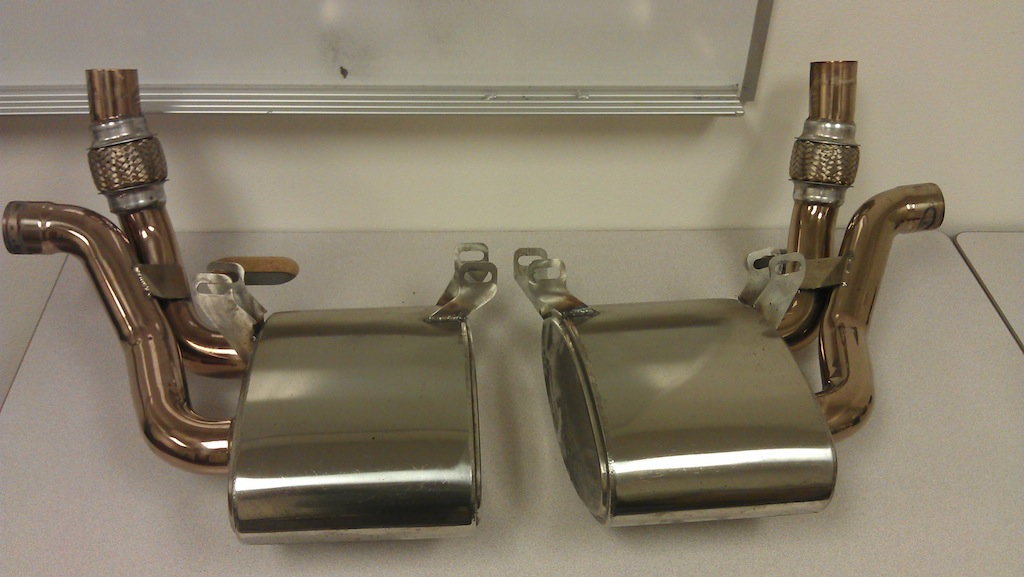
DIY Cost – $600 - $2,200
Professional Cost – $800 - $2,400
Skill Level – Moderate; Difficult for a complete novice, but straightforward for those with experience working on cars.
Both the early and later model 997s feature two mufflers tucked under both sides of the car. These mufflers are the ones most responsible for determining how a Carrera sounds. Removing them on a street car is not recommended, as they'll make the car extraordinarily loud. That said, the mufflers weigh roughly 21 lbs each, which is considerable if you have plans on tracking the car at all. Many racers replace them with lighter units (or replace the whole exhaust system with a lighter unit) in order to remove weight from the already pendulous rear end of the 911.
Related Discussions
- Porsche Labor Times - Rennlist.com
- Installing Muffler DIY - Rennlist.com
- Tubi Exhaust Review - Rennlist.com


